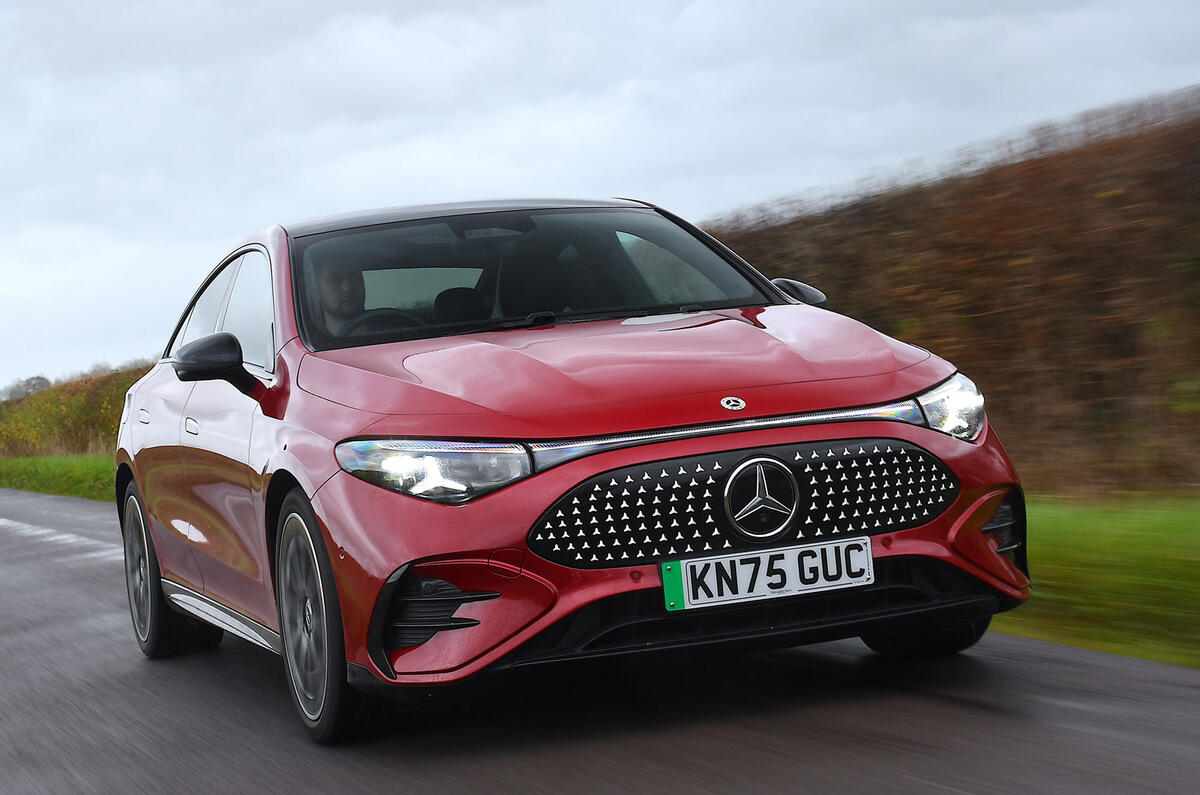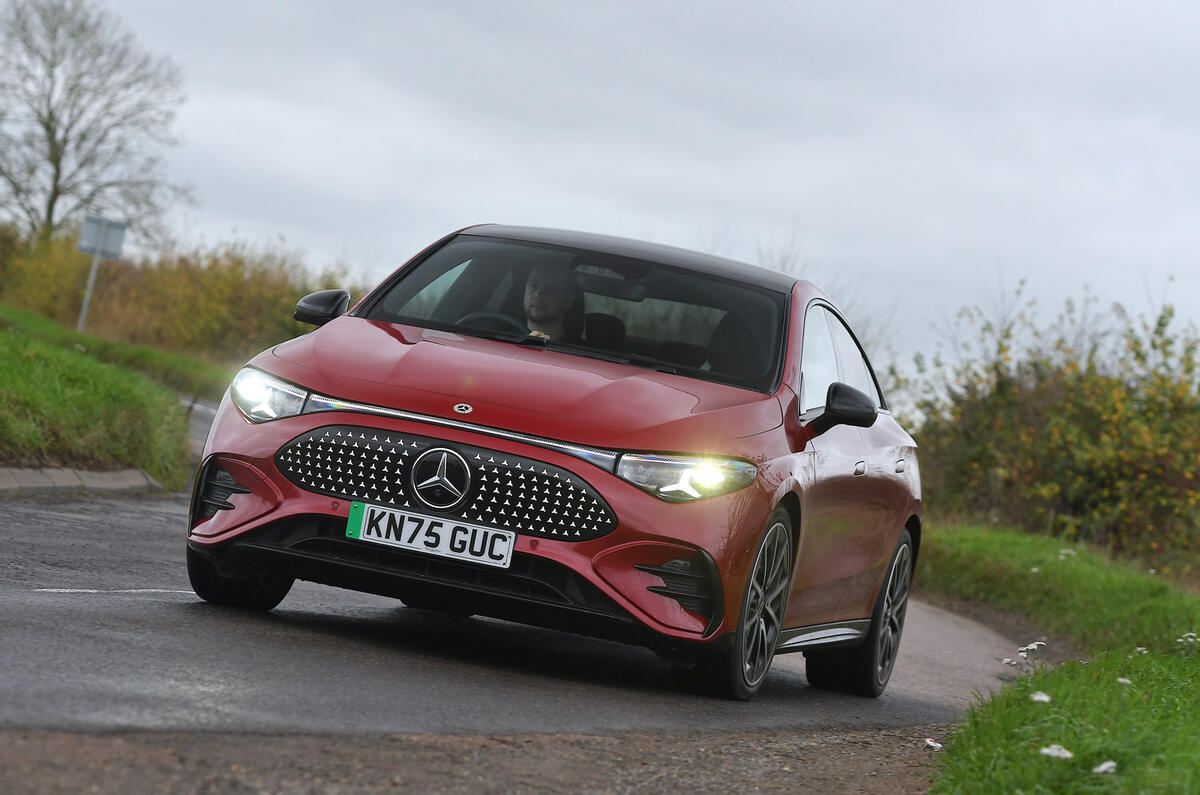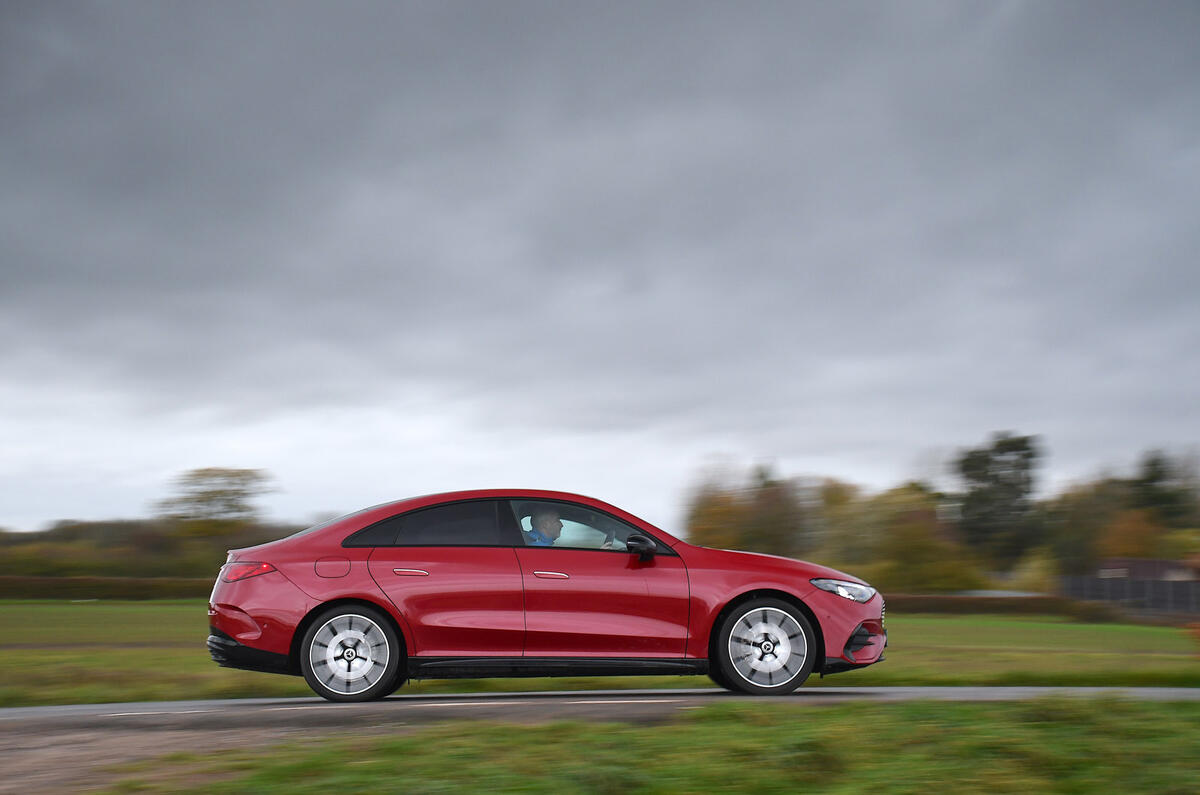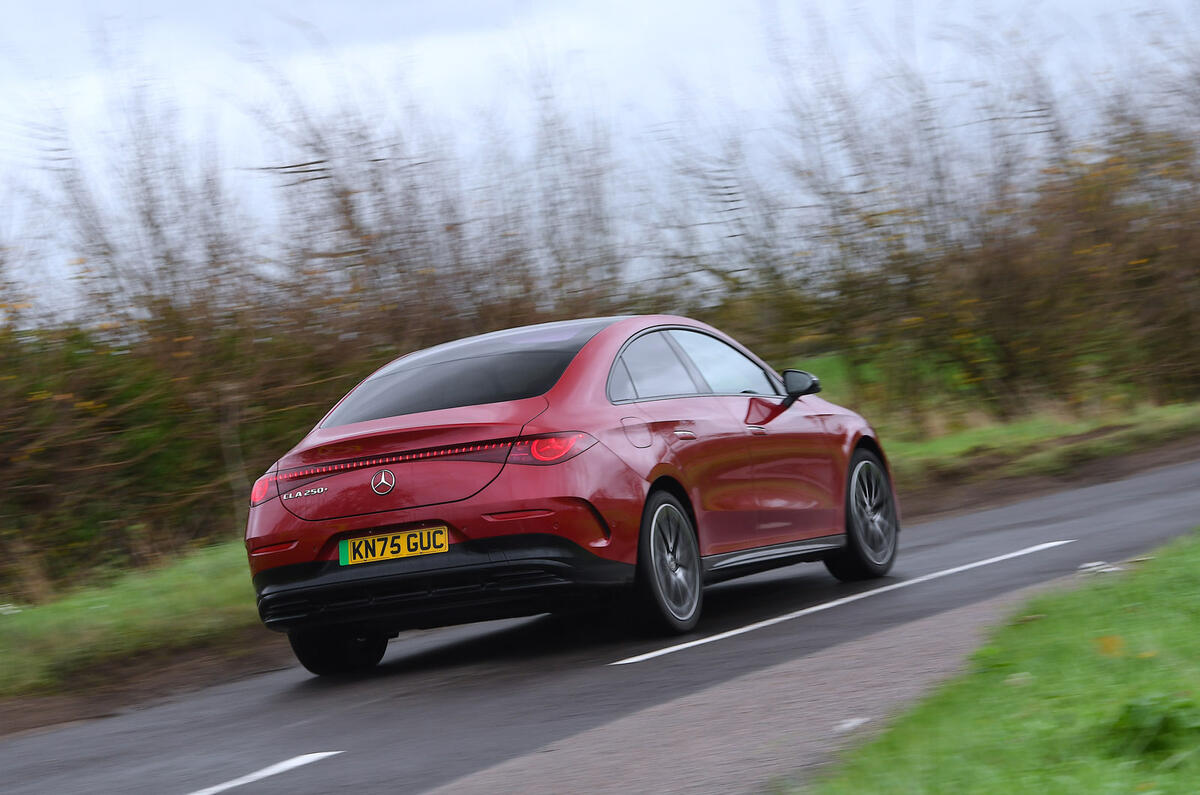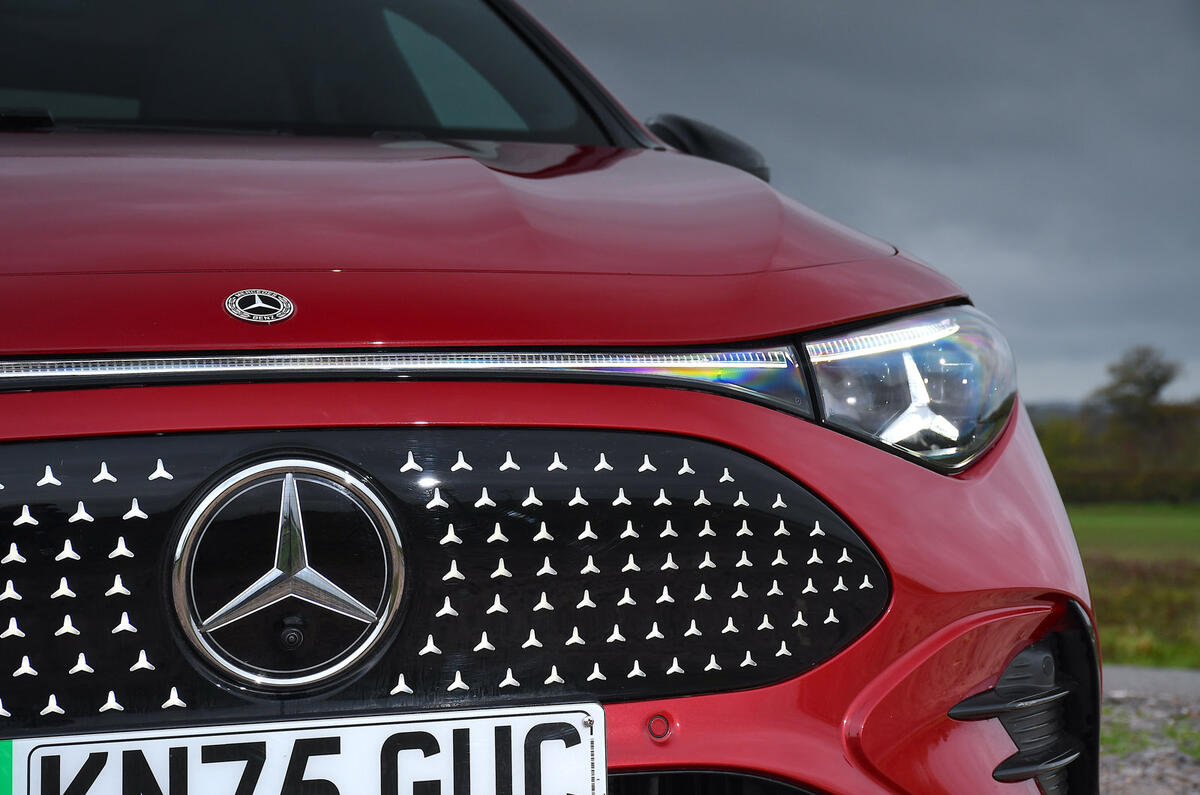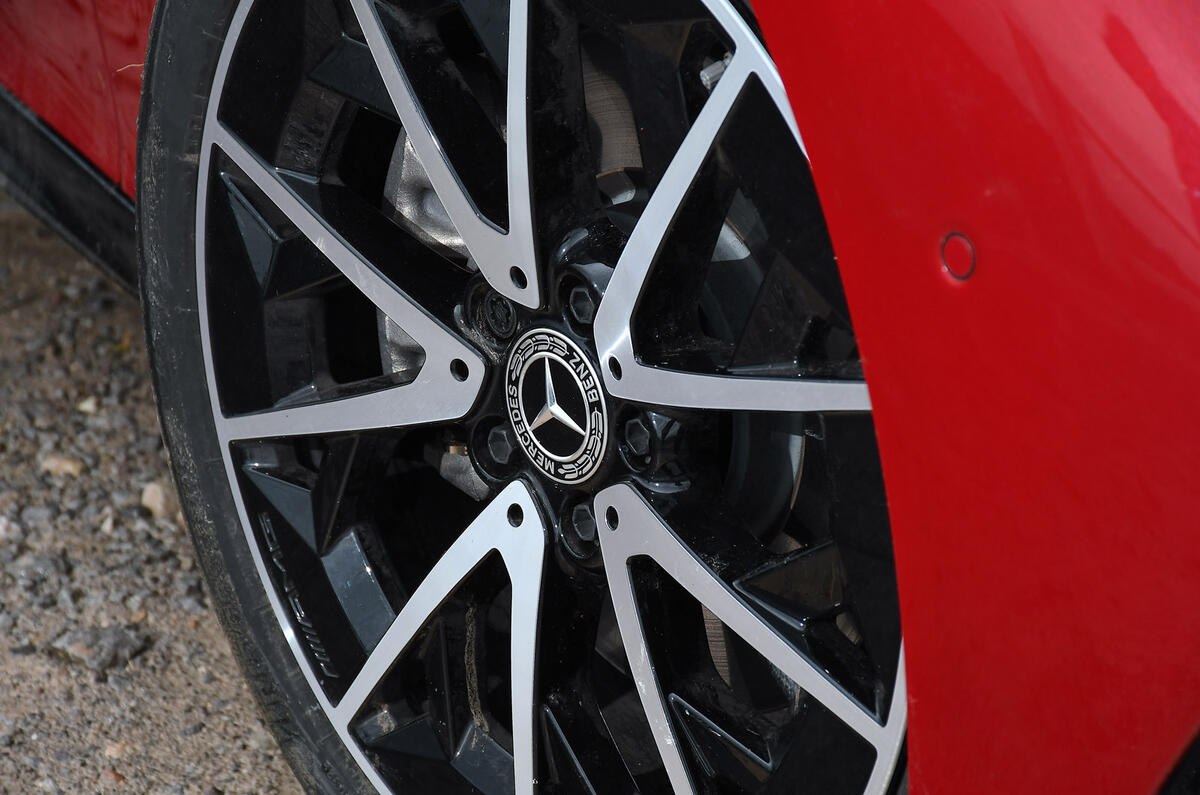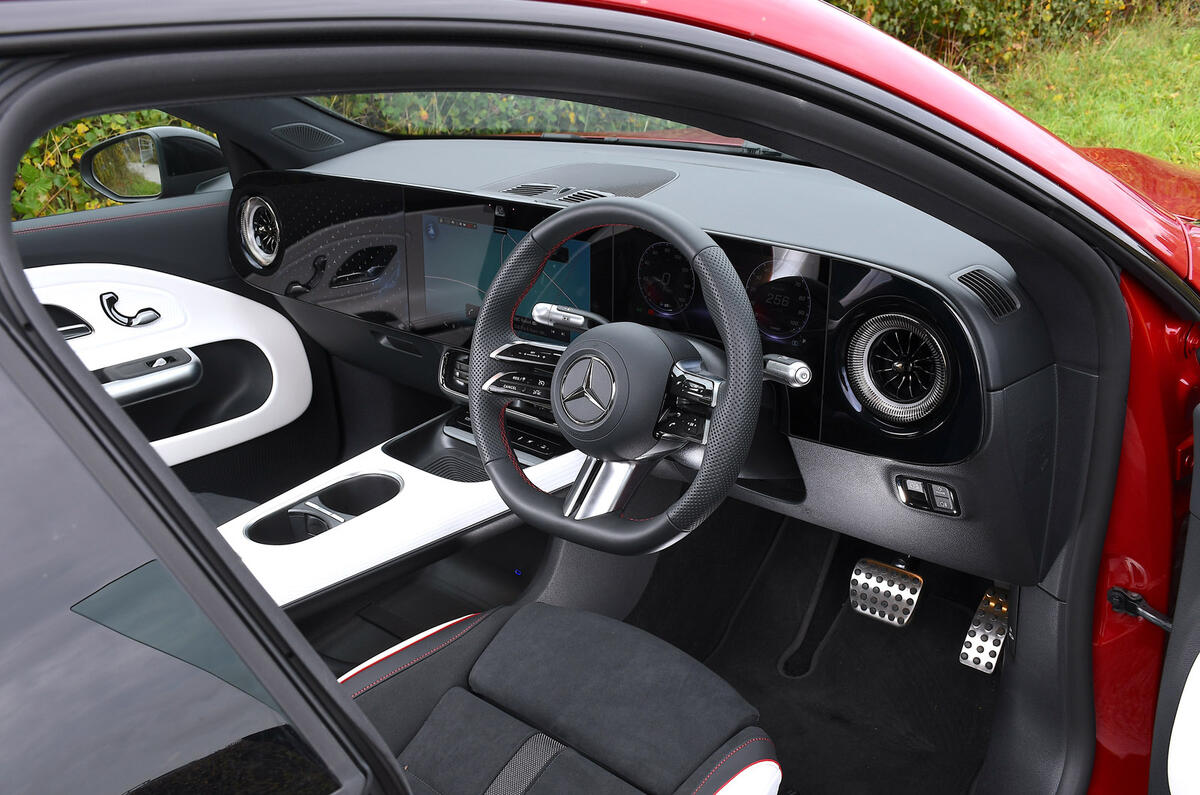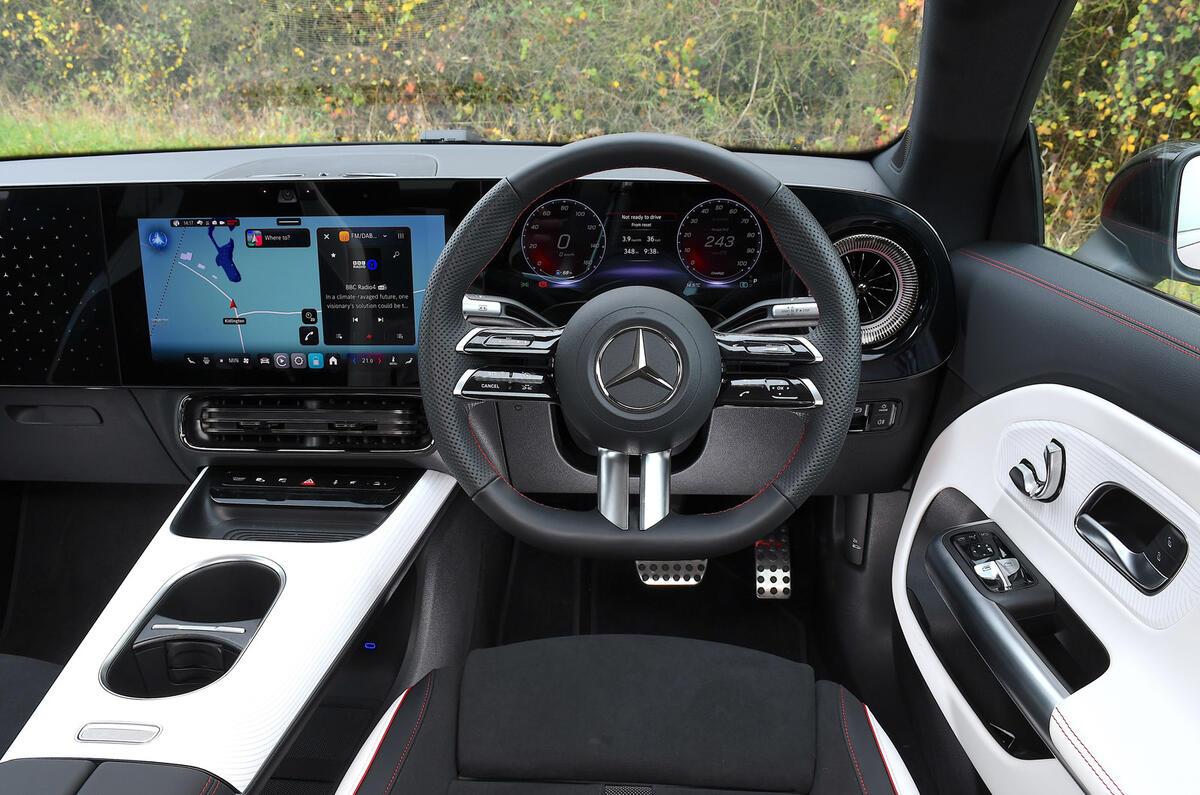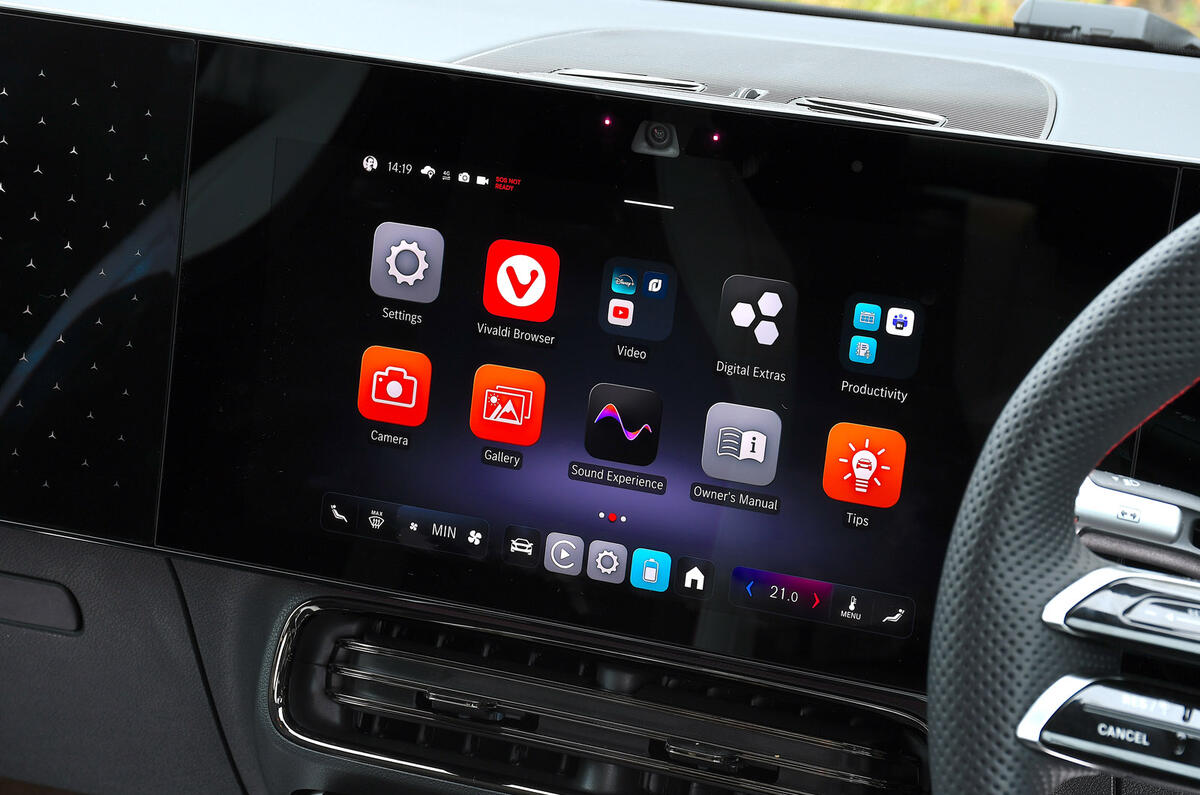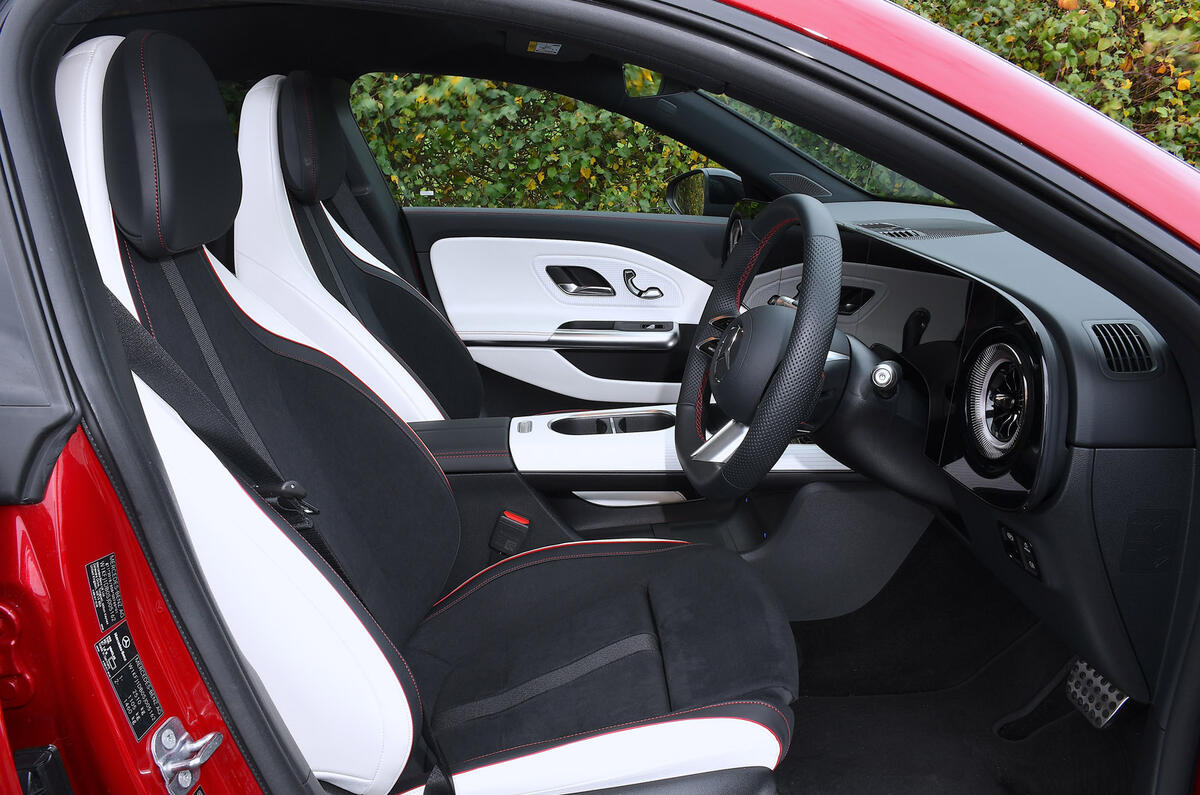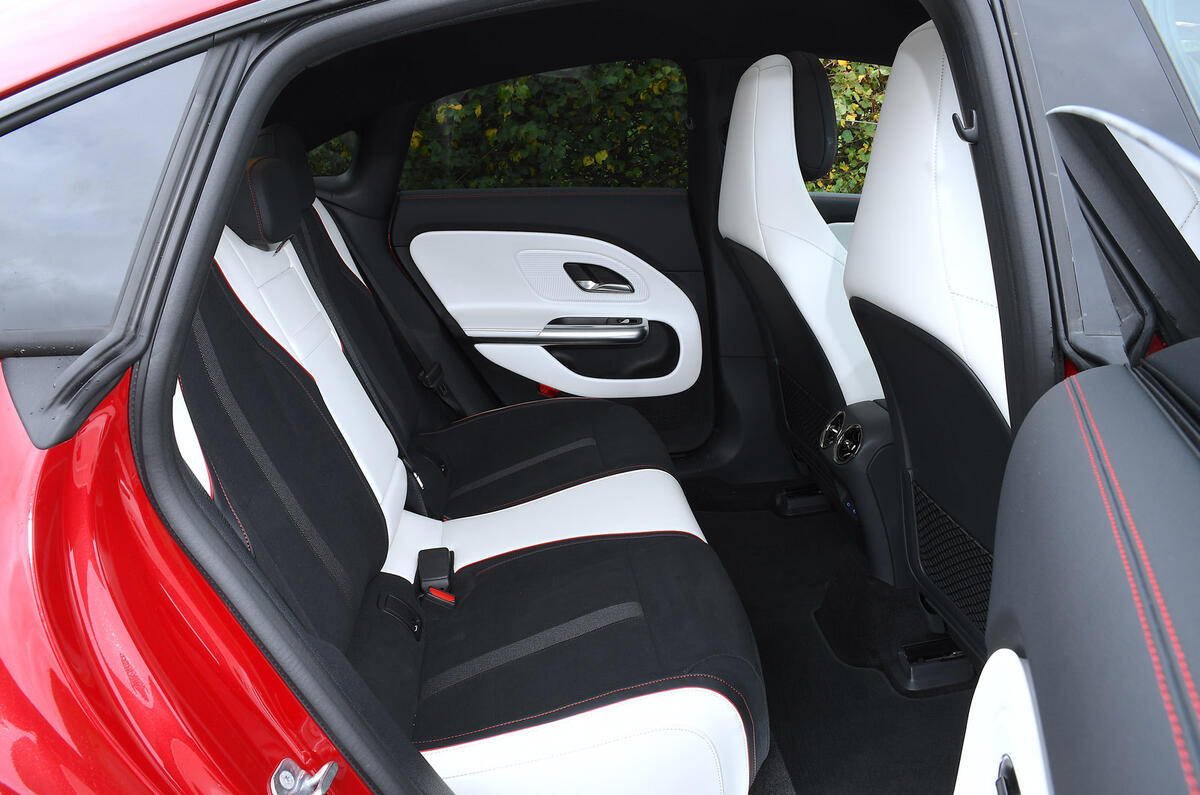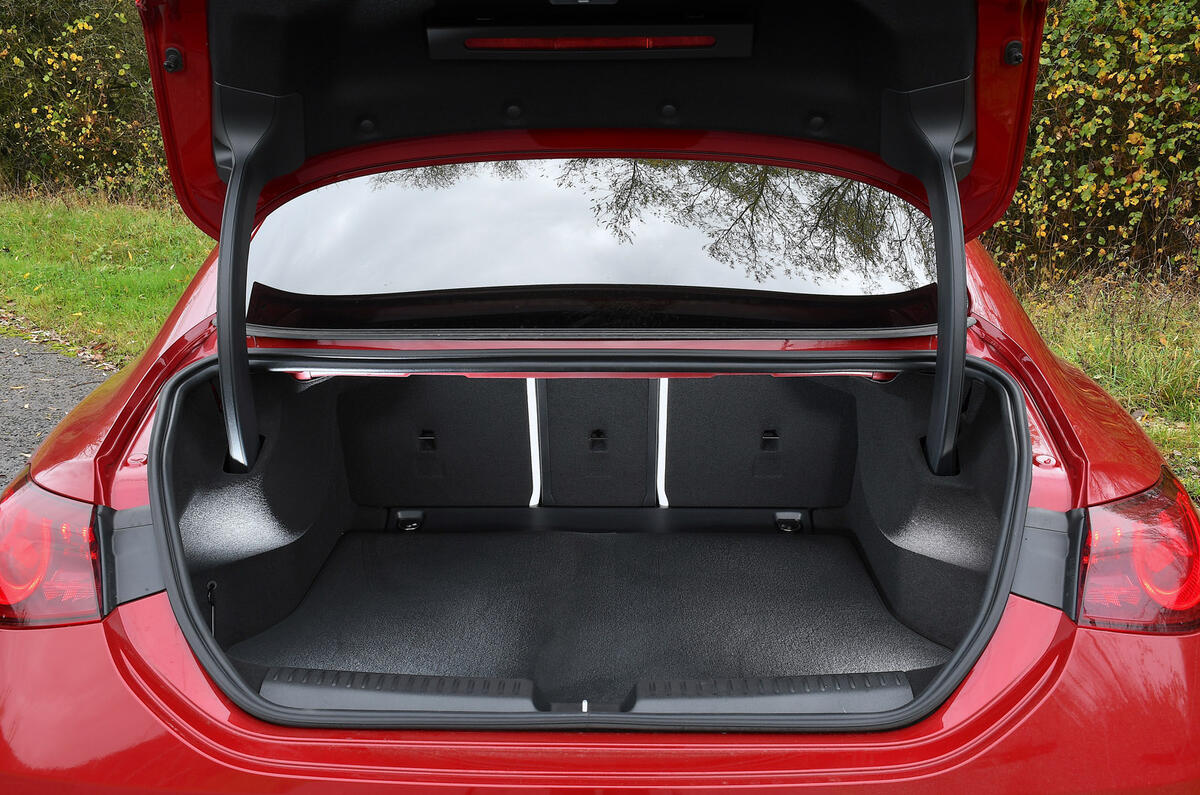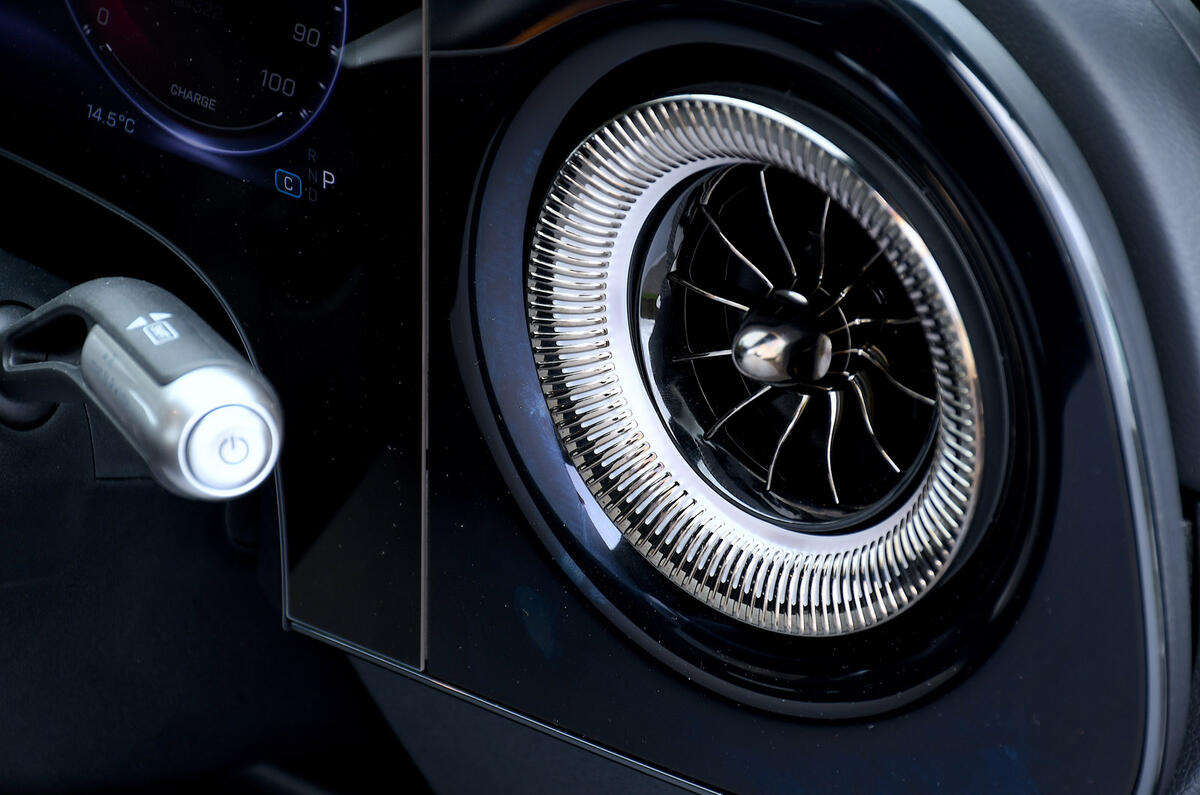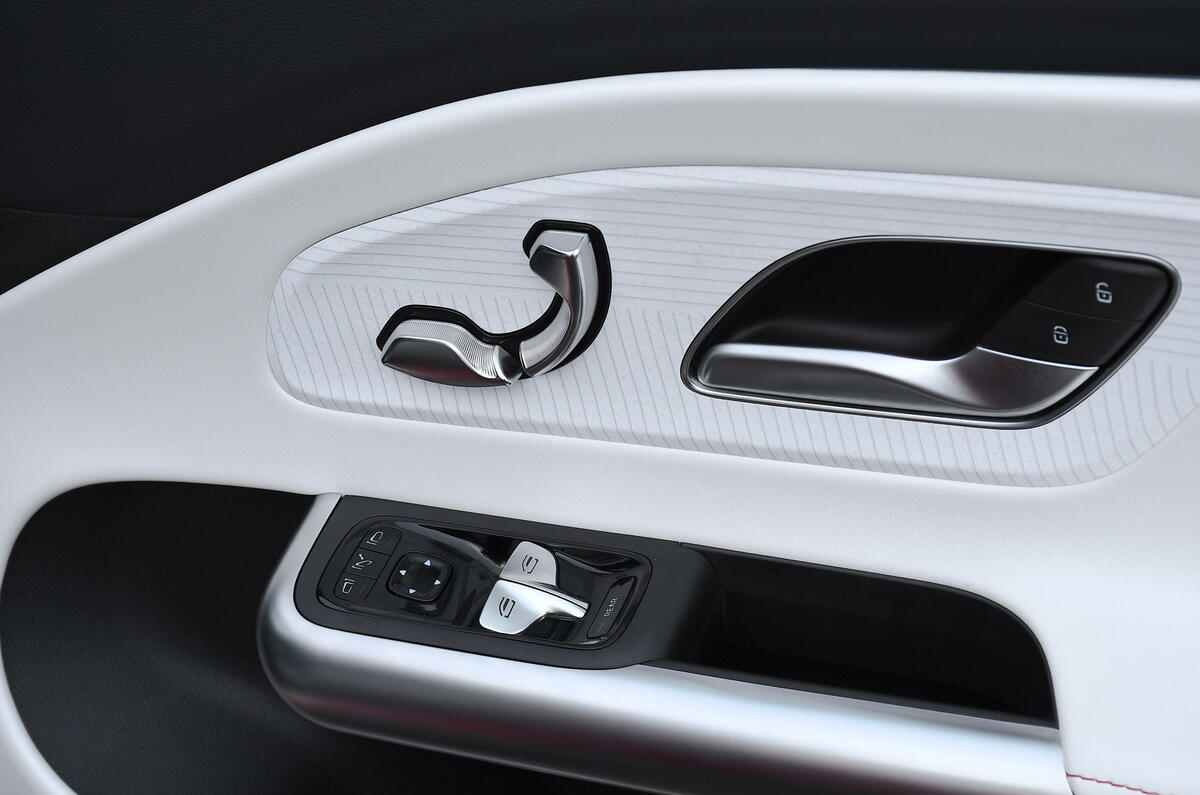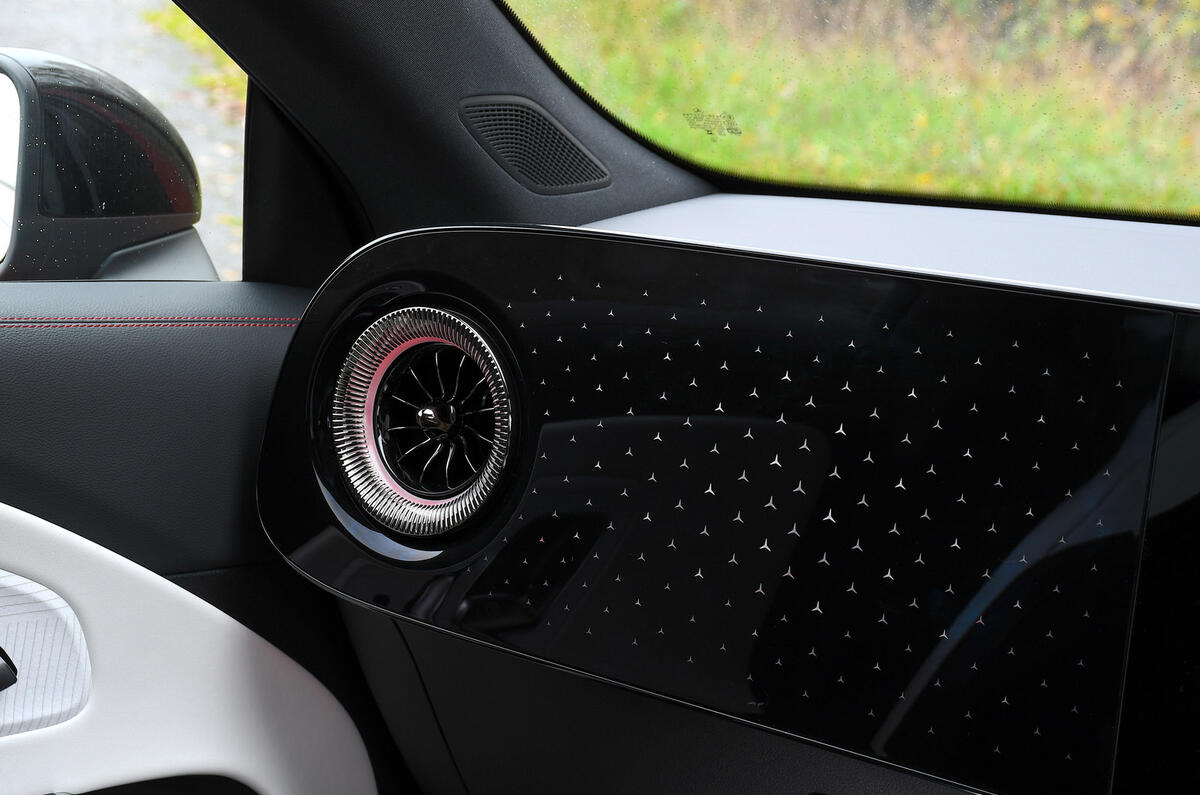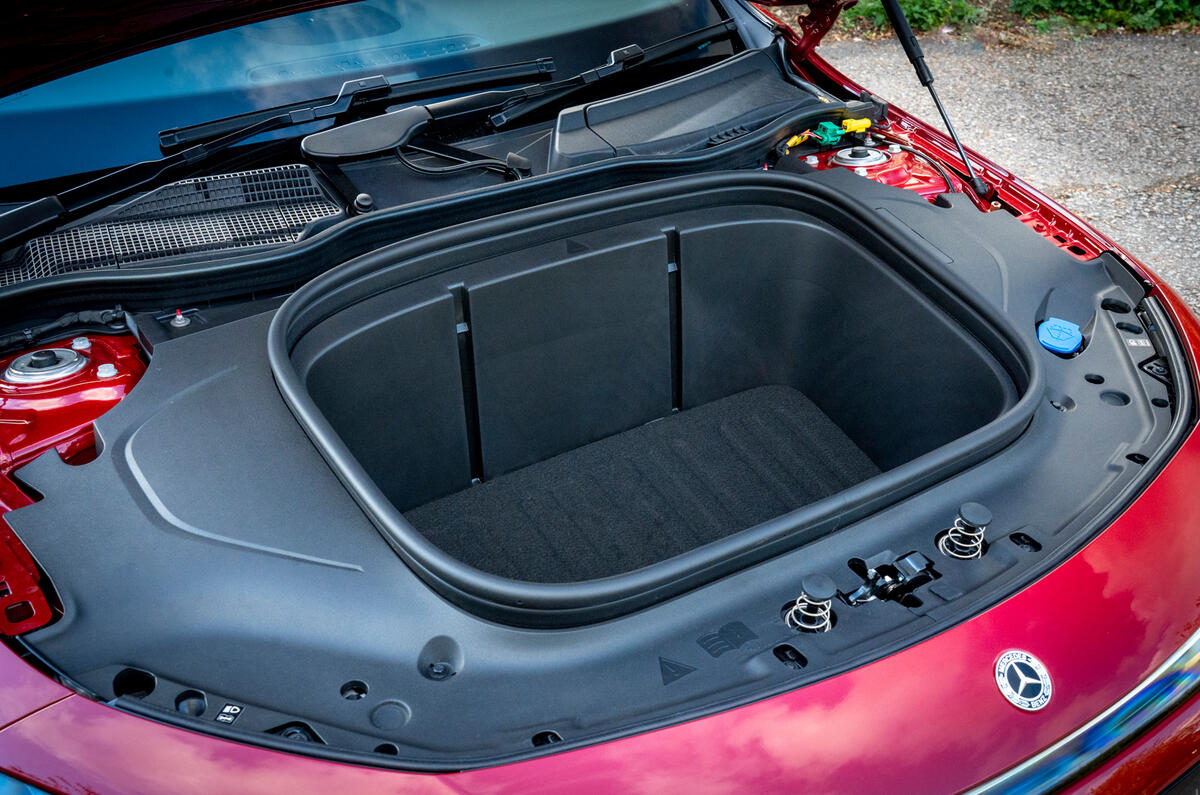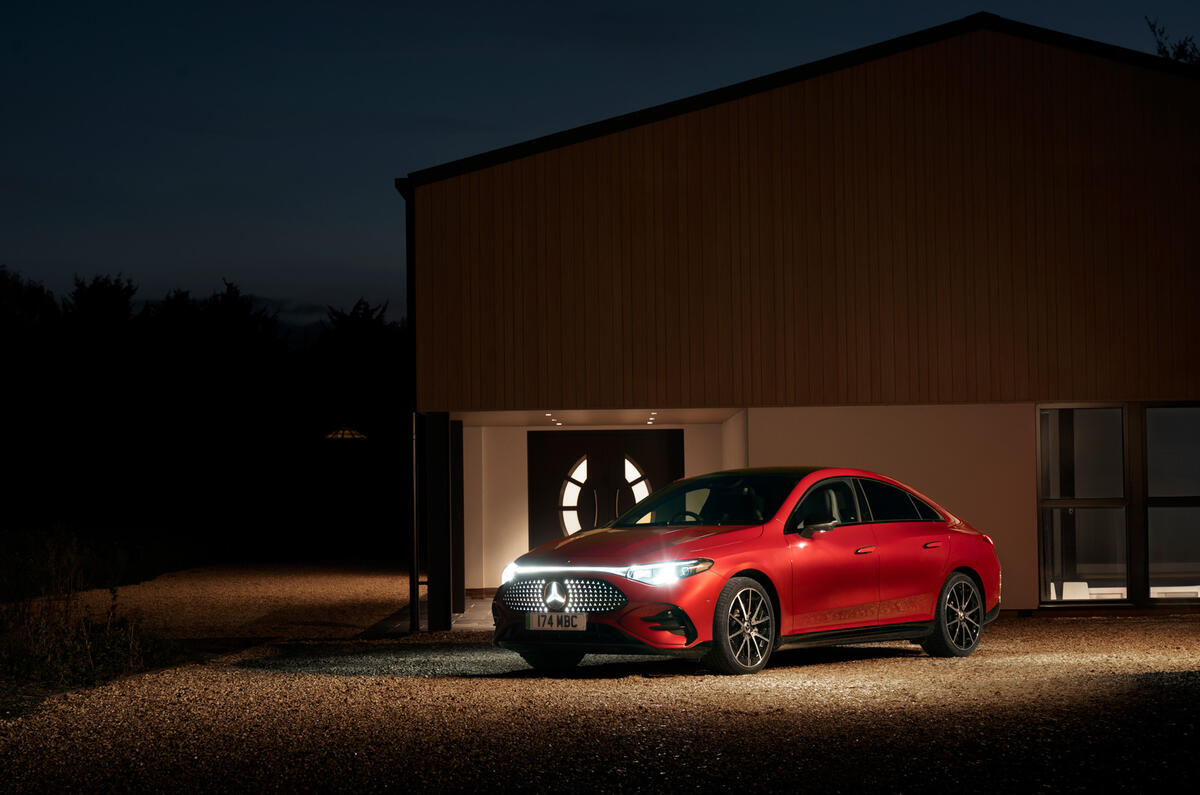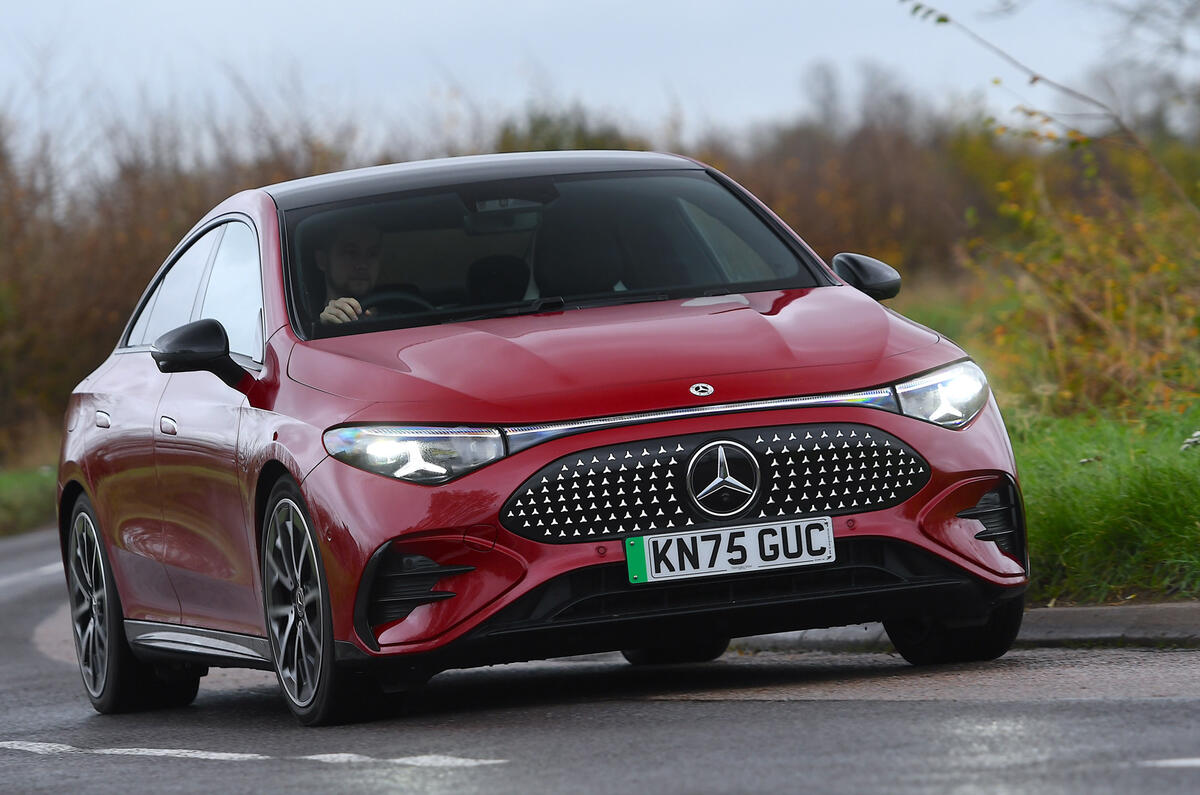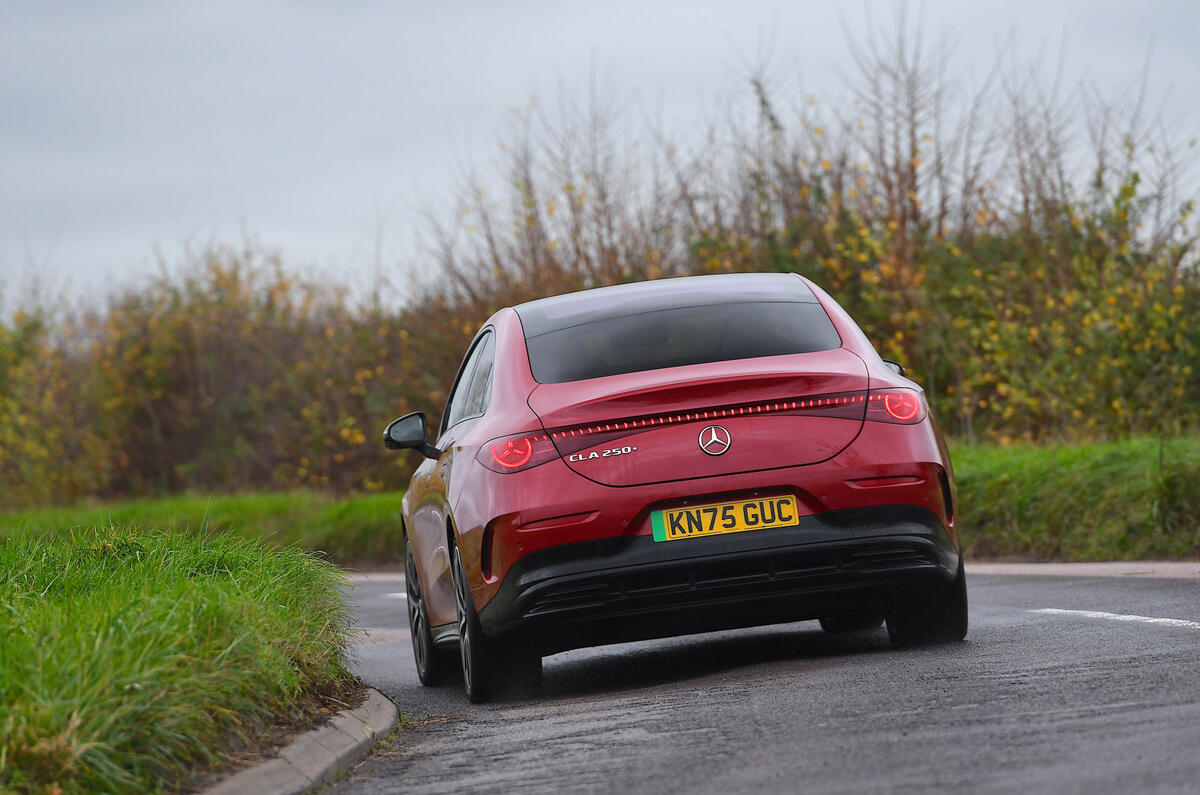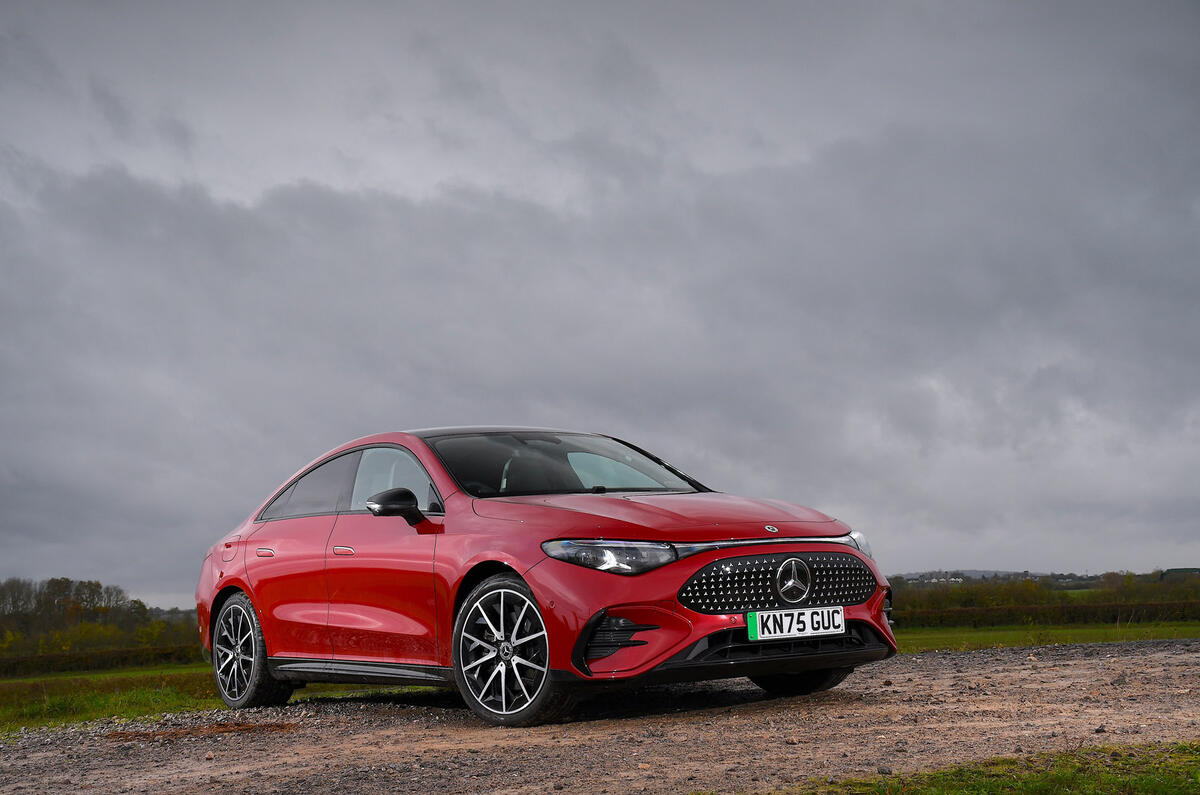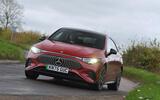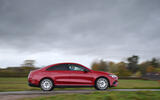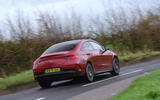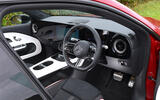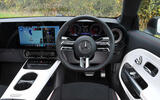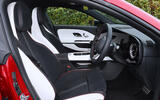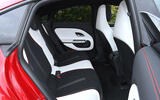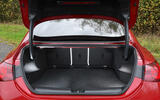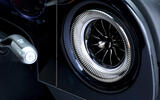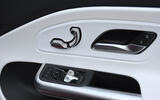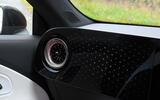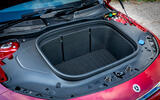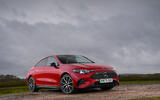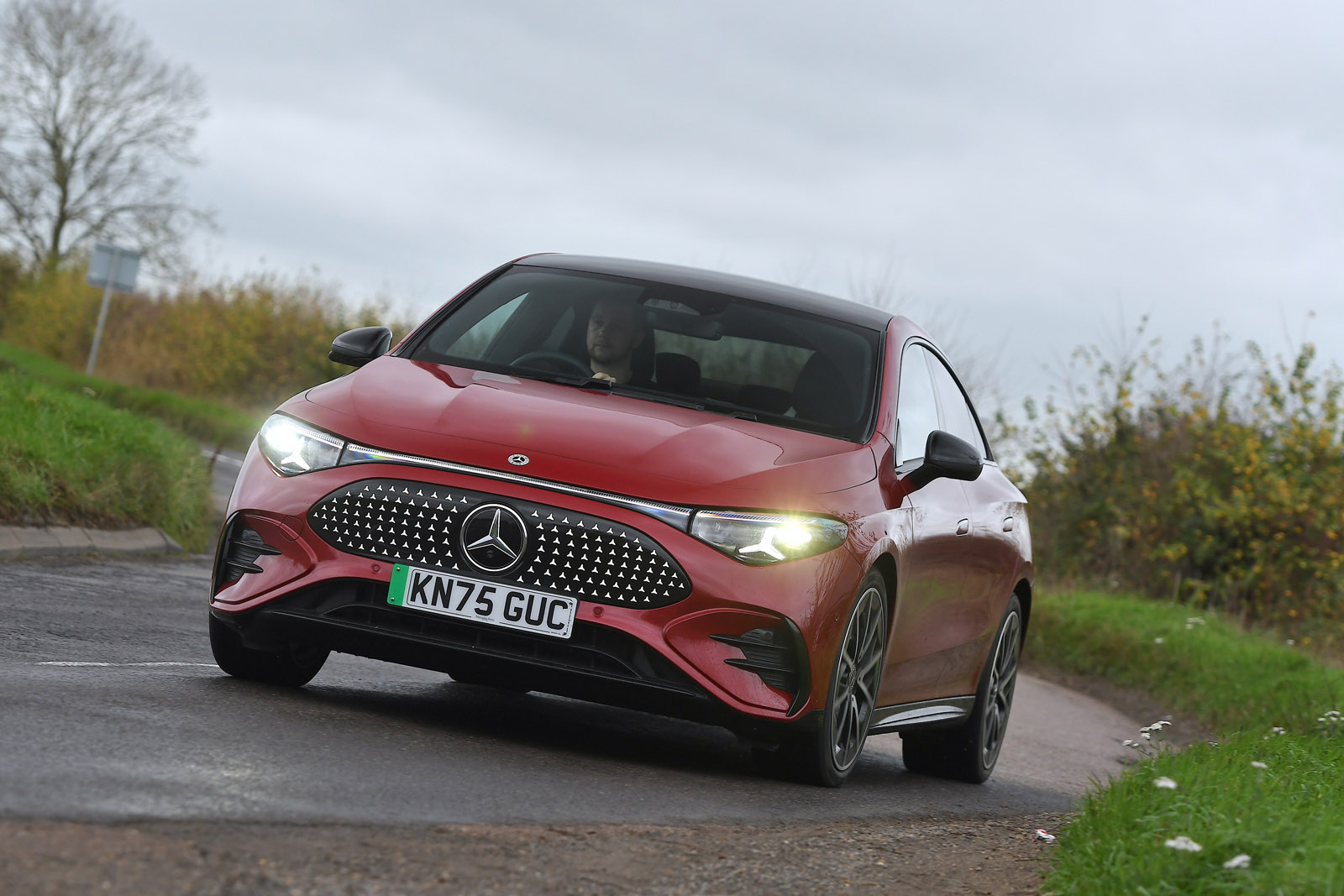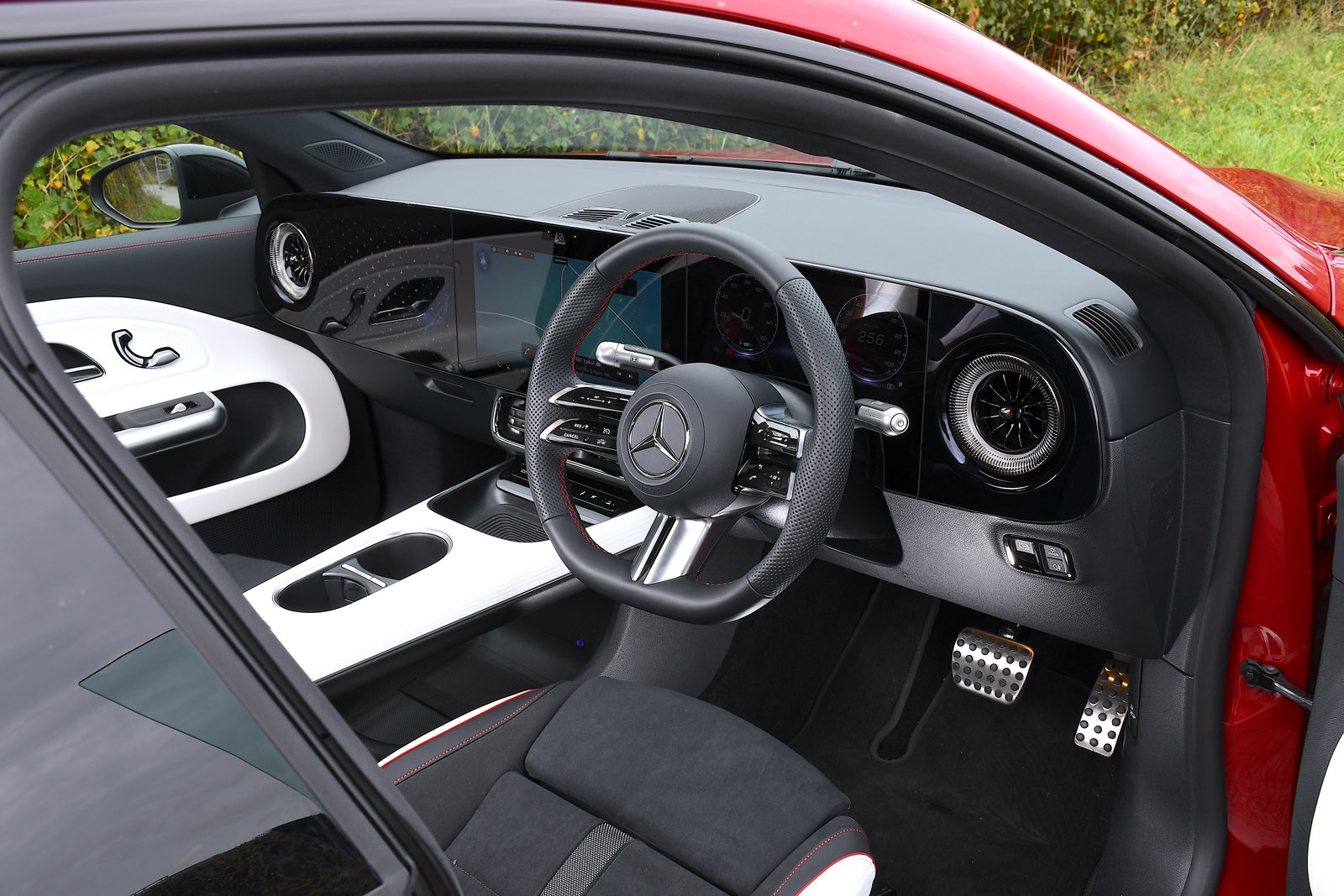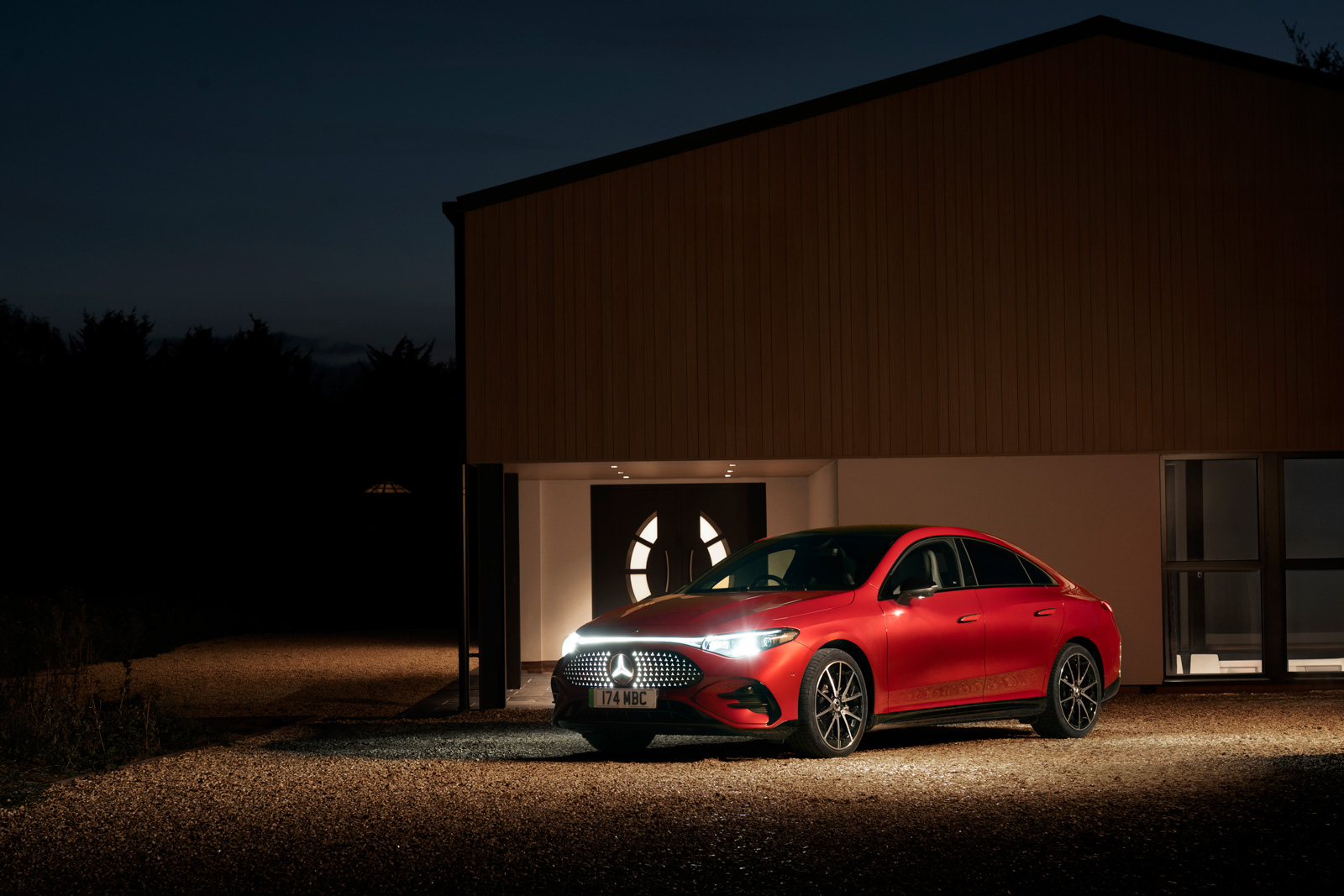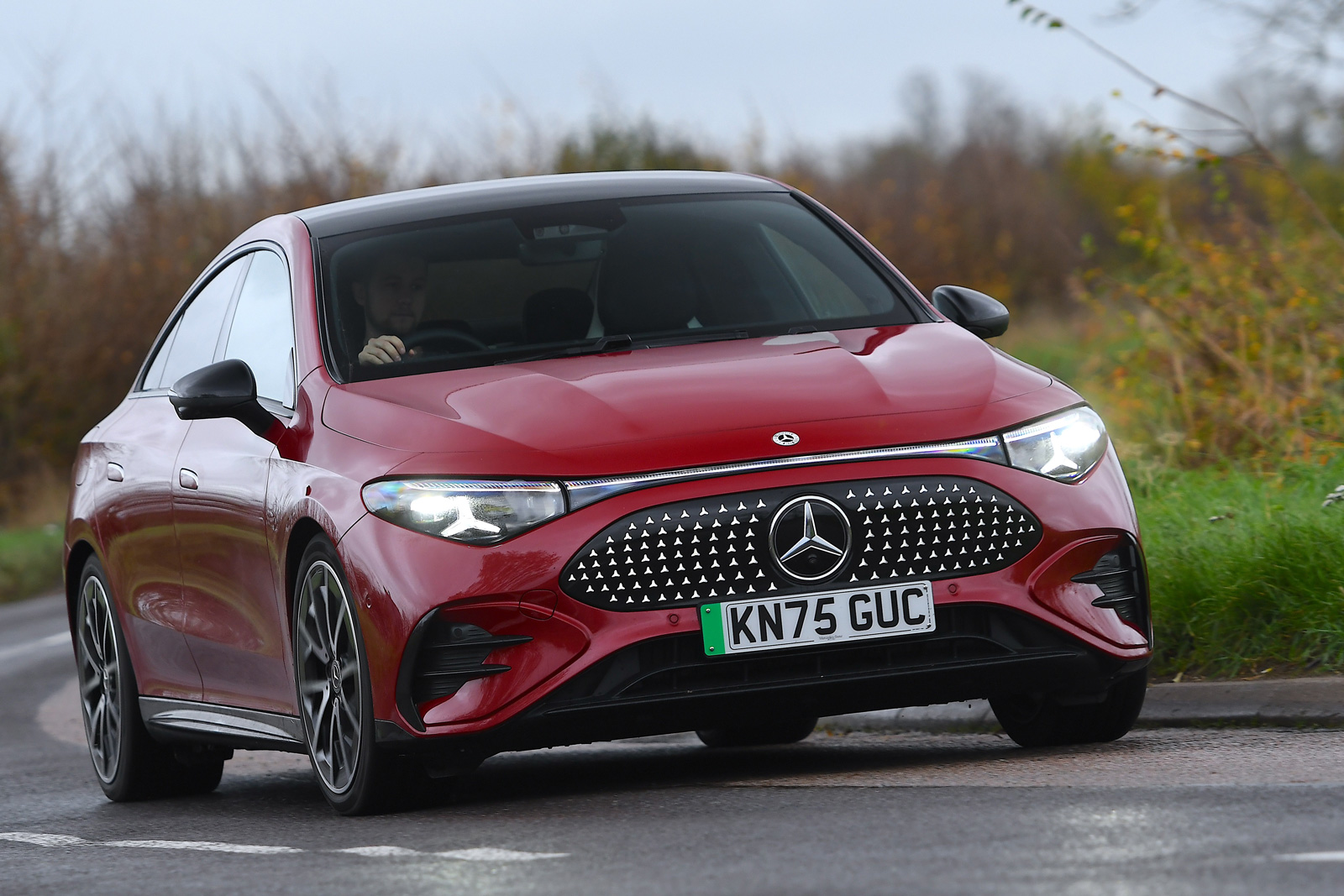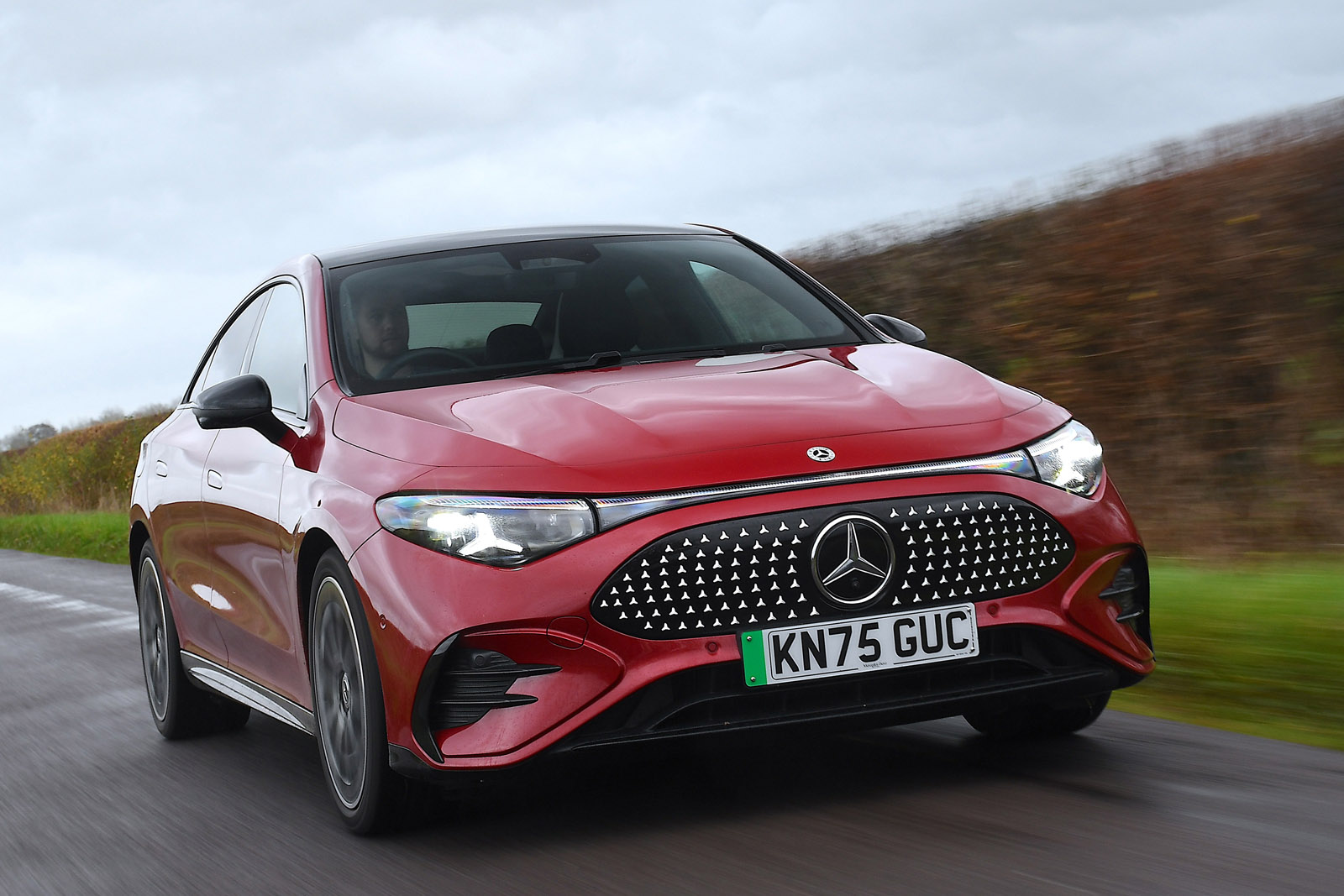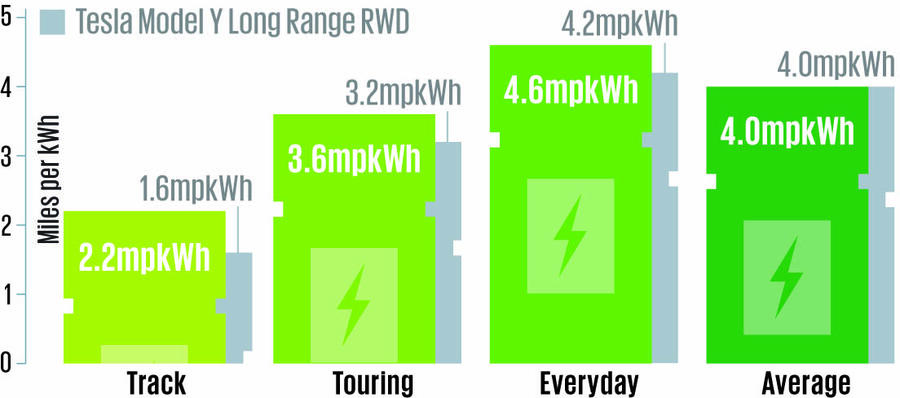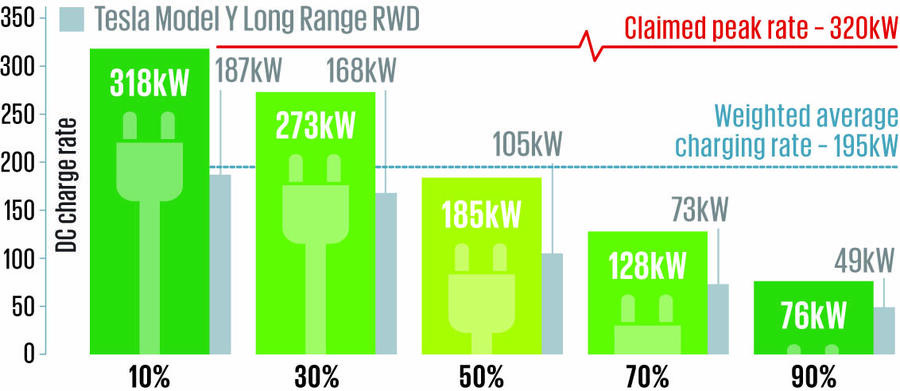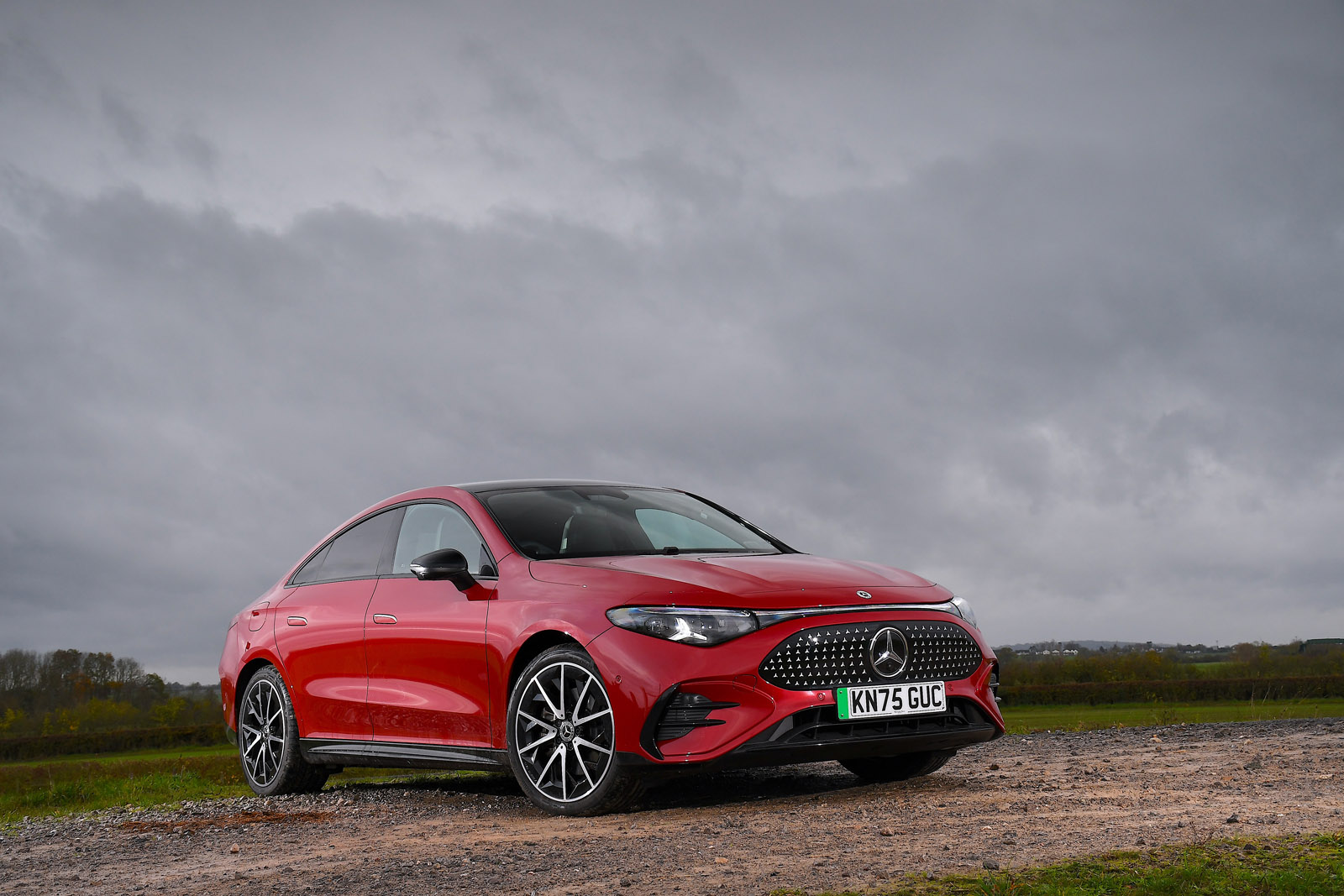While some other manufacturers are slowly revising their touchscreen-dominant strategies, Mercedes is ploughing on full steam ahead. As on other Mercedes, the approach is at least relatively cohesive. The startlingly vertical fascia and relatively short dashboard are unusual and call forth a 1950s vision of the future. Our test car didn’t have the Superscreen, which replaces the field of stars in front of the passenger with an additional touchscreen, but based on our experience of such systems we wouldn’t bother with the extra £1350 required to step up to AMG Line Premium Edition+.
While Mercedes largely pulls off its wilfully modern design, it has gone too far in stripping away physical controls. Even compared with other recent Mercedes, the CLA has lost its buttons for the heated seats and lumbar support, and neither is especially easy to access in the touchscreen either. Meanwhile, the touch-sensitive controls on the steering wheel are not the worst of their kind but have outstayed their welcome.

Nonetheless, there is plenty to like about the CLA’s interior. The touchscreen generally works intuitively, with the maps, media and essential vehicle controls all accessible directly from the home screen. The built-in navigation uses Google data, so it’s very aware of traffic conditions and will even warn you of potholes (we found it quite accurate). It gives you pretty good tools to find a fast charger, though it’s not infallible and misses some compatible chargers. The AI-assisted voice control is one of the best around, if no substitute for proper buttons. Switching in and out of smartphone mirroring is quick and easy, though Apple CarPlay did drop out occasionally, before reconnecting automatically.
Despite the sizeable battery, the CLA doesn’t give the driver the feeling of sitting on top of the car, and there is plenty of adjustment in the seat and steering column to find a comfortable driving position. The seats themselves are excellent as well, with softer padding than most Mercedes seats but plenty of support. We can’t help regretting the dearth of upholstery options, though. Even on Premium Edition+ trim, you’re limited to faux leather and microsuede in somewhat garish colours, whereas German buyers can spec black or brown leather. There is a good amount of interior storage, with generous cupholders and a dual-level centre console.

It is relatively tight in the back, however. It is short on leg room compared with the Tesla Model 3, never mind the Volkswagen ID 7 or Hyundai Ioniq 6. Rear passengers can just about tuck their feet under the front seats, and the floor doesn’t feel as high as in the Ioniq 6, but it’s certainly less accommodating than a conventional car of this size. Head room is okay, but only thanks to the standard full-length glass roof. The latter has no blind and can’t be darkened electrically but didn’t seem to excessively heat up the interior, at least in autumn.
The car is also down on boot space compared with rivals, though it does have a usefully big frunk, at 101 litres. The only way to open it is by pulling a lever in the interior, which does limit its usability.



